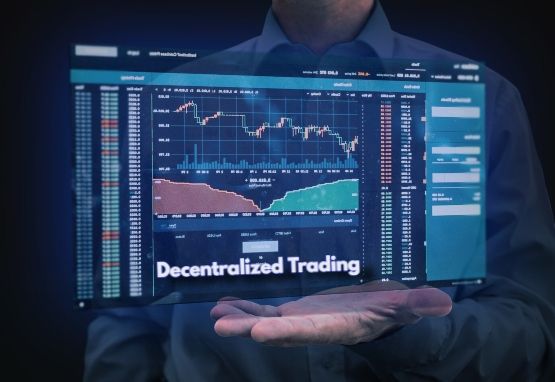Decentralized trading, the three major problems to be solved. Discover the fundamental characteristics that decentralized platforms must respect.
Decentralized trading is a great way to trade without a broker, while keeping control of your money. However, decentralized trading platforms have to meet a number of specific requirements. We’ll summarize them in three main points.
What is decentralized trading?
This dialogue illustrates a conversation between two people in which one simply explains what decentralized trading is to the other, answering questions and highlighting some important aspects of this financial practice.
Olivier: Hi Valerie, how are you?
Valerie: Hi Olivier, I’m fine, thank you. How are you?
Olivier: I’m great, thanks. Tell me, have you heard of decentralized trading?
Valerie: Hmm, not really. It sounds technical. What is it exactly?
Olivier: Well, it is a bit technical, but I’ll try to simplify it. Decentralized trading is a way of trading without the need for a central authority like a bank or financial institution.
Valerie: Ah, so that means it’s an exchange of crypto-currencies?
Olivier: Yes, in a way. It’s a direct peer-to-peer exchange between users, without going through a centralized platform. It’s done using smart protocols and contracts on blockchain networks.
Valerie: And how is this different from traditional trading?
Olivier: Well, in traditional trading, we often depend on intermediaries like brokers or banks to execute transactions. With decentralized trading, these intermediaries are eliminated, which can reduce fees and delays.
Valerie: Sounds interesting, but is it safe?
Olivier: That’s a good question. Security is a major concern, but blockchains use secure and transparent protocols. However, there are always risks, particularly related to price volatility and the security of digital wallets.
Valerie: Okay, I see. Have you ever done decentralized trading?
Olivier: Yes, I’ve tested a few platforms. It’s fascinating to see how direct and transparent transactions can be. But I always recommend doing thorough research before taking the plunge.
Valerie: Thanks for all these explanations, Olivier. It’s made me want to learn more about the subject.
Decentralized trading, the three fundamental characteristics that must be respected:
1. The design of the platform must have taken into account the security of trade execution. Serious audits must have been carried out to avoid bugs as far as possible.
2. Costs and liquidity must be perfectly adapted and controlled for each market the platform offers. Decentralized management of crypto, forex or oil trading calls for specific measures for each of these markets
3. The decentralized platform trading must offer an execution speed that enables an amateur or professional trader to match that of a centralized platform.
Decentralized trading in crypto-currencies, Forex or commodities has been gaining in popularity in recent years. Unfortunately, one element is holding the sector back: the lack of reliable platforms for no-deposit transactions.
It’s noticeable that all too often, users are often faced with clunky, poorly designed interfaces that are difficult to understand and almost impossible to navigate. This situation is not only inconvenient, it also increases the risk of costly errors.
Being able to navigate intuitively, quickly and efficiently is a basic requirement, but the problems to be solved don’t stop there.
Traders also need to be assured that their orders will be processed at lightning speed. This, while keeping fuel costs to a minimum. The congestion of Layer 1 networks means that this is not always possible.
All this calls for highly specialized skills on the part of those responsible for such platforms, and outstanding programmers.
The people in charge of these platforms need to pay particular attention to the smart contracts that keep trading running smoothly, and security breaches can put everyone’s funds at risk. Thorough audits are essential, and must be carried out by independent organizations.
Diversity and choice: a recurring problem:
There’s another piece of the puzzle that’s often overlooked in decentralized trading. Traders are regularly frustrated by a disappointing selection of trading pairs, which limits the digital assets to which they can gain exposure. Tight markets can also affect the leverage multiples offered for crypto-currencies.
Example of an integrated solution on certain platforms:
Layer 2 integration paves the way for fast trading orders and minimal gas fees — coupled with up to 150x crypto leverage, 250x on commodities and 1,000x on forex.
Non-depository trading is still in its infancy. Demand is growing strongly and promisingly under a variety of market conditions. The aim is to choose the most user-friendly, robust and capital-efficient decentralized trading platform.


2 commentaires sur « Decentralized trading, the three major problems to be solved »
Les commentaires sont fermés.